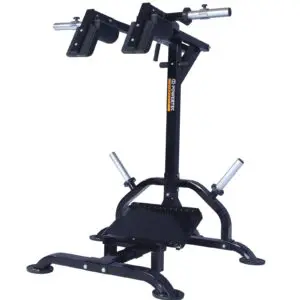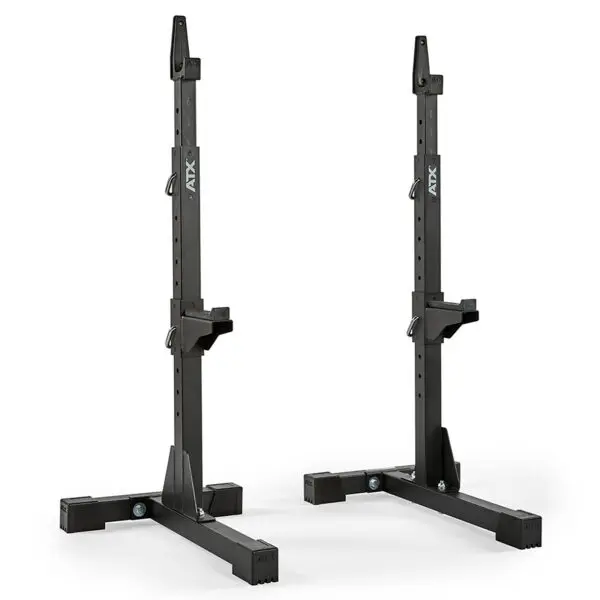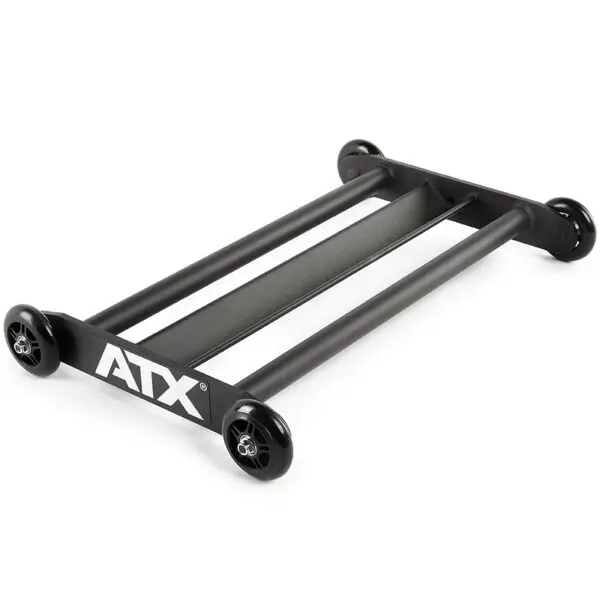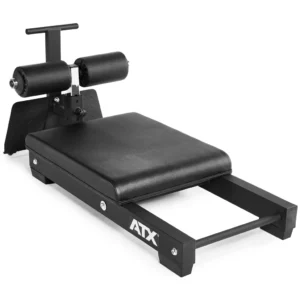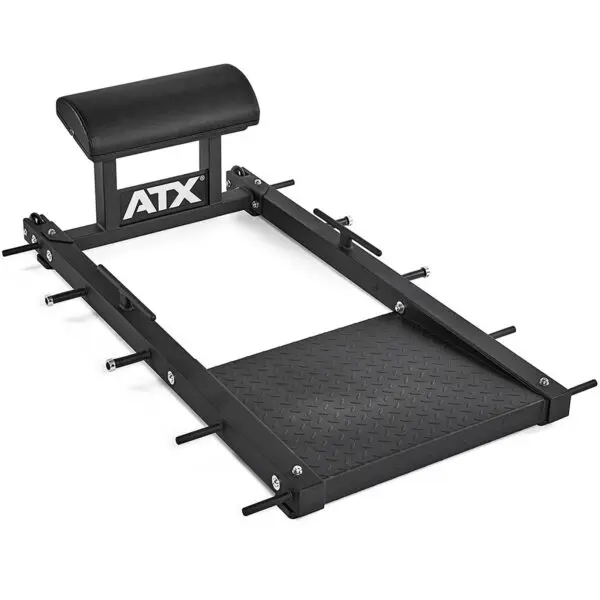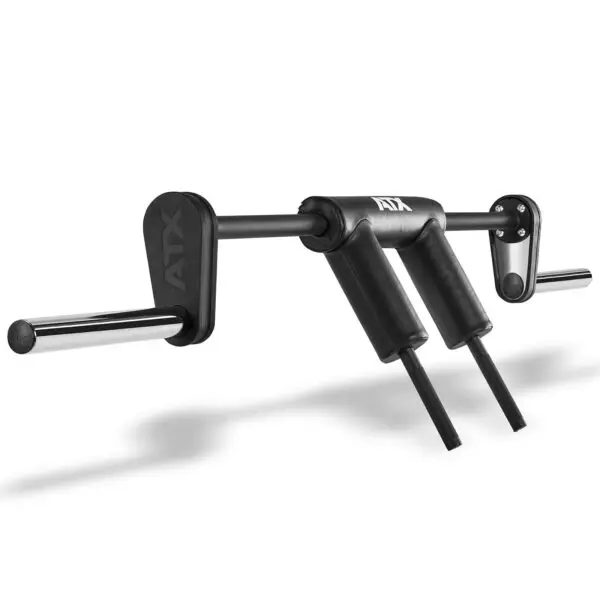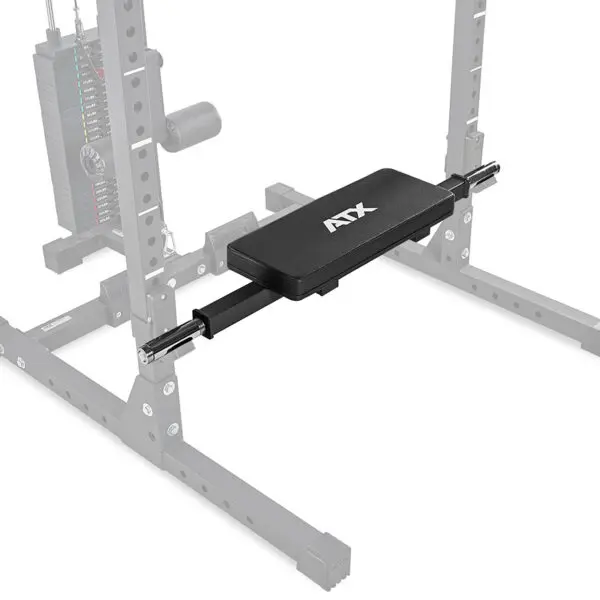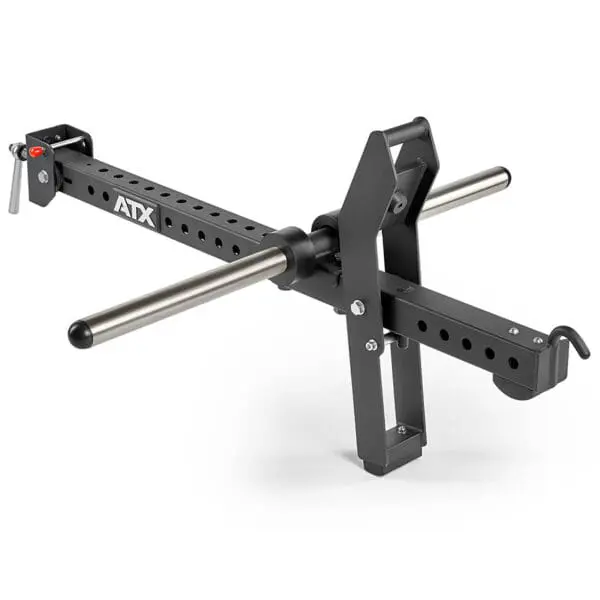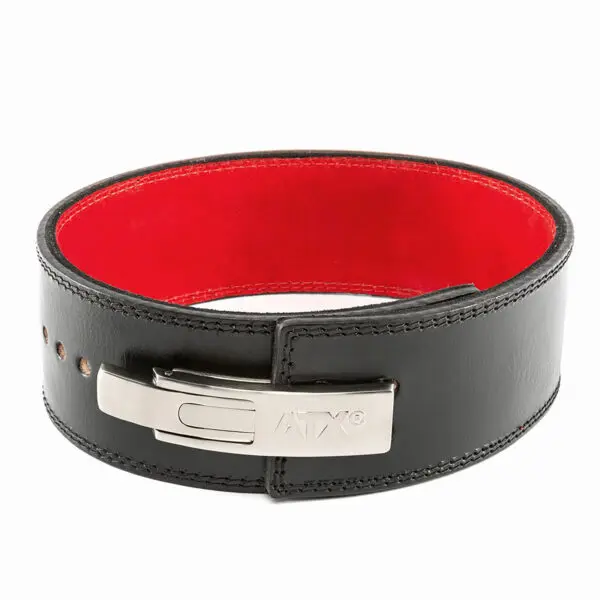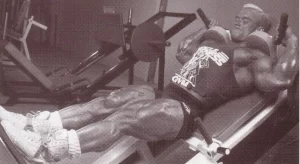
 GLUTES Build and Grow with Booty Activities
GLUTES Build and Grow with Booty Activities
Training to Target the Peach!
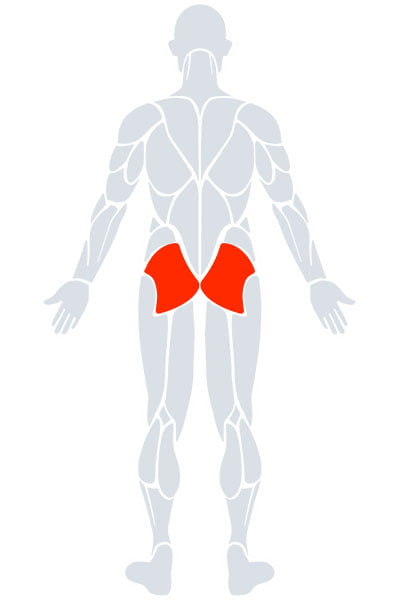
Best equipments for Glutes
-
ATX® Squat Stands 510
$395.00Read more -
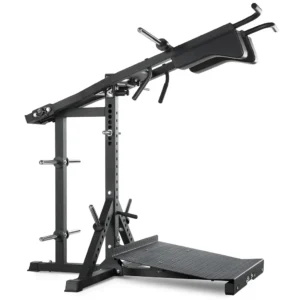
ATX® Lever Arm Squat Pro – Viking Press
$2,145.00Read more -
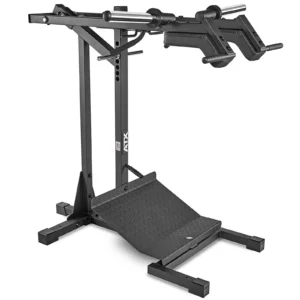
ATX® Squat Calf Machine 600
$1,365.00Add to cart -
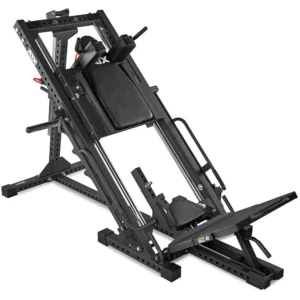
ATX® Leg Press/Hack Squat 4in1 Combo
$3,950.00Add to cart -
ATX® Glute Ham Roller
$129.00Read more -
ATX® Floor Glute Bench
$539.00Add to cart -
ATX® Hip Thruster Bench
$575.00Add to cart -
ATX® Hip Thruster Attachment
$239.00Add to cart -
ATX® Belt Squat Option
$539.00Add to cart -
ATX® Lever Leather Powerlifting Belt
$122.00Select options This product has multiple variants. The options may be chosen on the product page
Glutes
Frequently Asked Questions

 What are the functions of my glute muscles?
What are the functions of my glute muscles?
The glutes might seem like a simple and single muscle, but they’re actually a set of three muscles. When you know a little more about how they work, it will be easier for you to see why I’m recommending what I am below. I’m not going to go into a crazy amount of detail, so don’t worry. I’m just going to cover some of the most important bits.
So let’s start with the muscles that make up your rear end – the Gluteus maximus, Gluteus medius and Gluteus minimus. The Gluteus maximus is the biggest muscle in the body and it starts right at the top of the pelvis and goes all the way down into the hip joint.
The gluteus medius is much smaller and is at the top, outer section of the butt. It starts at the pelvis and stops at the side of the hip joint. The gluteus minimus is a triangle-shaped muscle located beneath your buttocks.
The Gluteus maximus forms the overall shape of your buttocks. Its main functions are hip extension and hip rotation. You can feel this muscle perk up by standing up straight and moving your leg backwards. You’ll also feel it heating up during a squat.
The Gluteus medius and Gluteus minimus help your Gluteus maximus in lifting your leg sideways. You’ll feel them working when you move your leg sideways, away from your body. They also aid in rotating your thighs inwards when you bend your hips.
Now, sitting is perhaps one of the biggest issues when it comes to the glutes. This is because sitting for too long can actually cause the hip flexors to shorten and weaken. When this happens, your pelvis pushes forward and gives you that dreaded pot belly look.
If your hip flexors are particularly tight, you’ll want to give them a really good warm-up before you start working out. I’ll show you how to do this below.

 What are the best exercises for my glutes?
What are the best exercises for my glutes?
Before you even think about getting down to business and working those glutes, start off with a good warm-up. Think about it this way: the harder you push yourself during your workout, the more you need to warm up those muscles. Don’t get lazy now.
There are a few warm-ups you can do to get these muscles fired up.
The first is a deep lunge. From a standing position, move one leg forward and bend your knee to lower yourself to the floor. Rest your palms on the floor for support as your other leg is extended fully behind you. Keep your back straight and push down into the ground. You’ll really feel your hip flexors opening up here.
Now, while you are in this position, bring the foot behind you and use your hand to pull it in towards your body. This is going to give you an even deeper stretch for both your glutes and thigh muscles. Swap sides.
1. The glute bridge
This is a beginner-friendly exercise that will really activate those glutes. Lie down on your back, bend your knees and keep your feet flat. Place your arms at your sides with your palms facing up. Now slowly lift your hips off the floor. Squeeze your glutes as you lift your hips, pause, and then lower down, slowly. Don’t move any other part of your body during the lift and lowering motion for better results.
2. Reverse lunge
Standing with your feet about hip-width apart, use one of your legs to take a step back and lower yourself down. Bend your knee to make a 90-degree angle. Keep your back straight and don’t even think about rotating those hips. To get back up, you need to push down through the front heel.
3. The squat
Ah, the age old squat. This one is great for your glutes, but it comes with the added bonus of working those legs too. Start off by standing with your feet about shoulder-width apart. Bend those knees and start lowering down until your thighs are parallel to the floor. Pause here and then start raising yourself up again, pushing down through your heels. If your heels are lifting off the floor, try bringing your legs in just a little closer together, or don’t squat as low until you’re stronger.
4. Step-ups
This is a really simple exercise because all you’re really doing is just climbing a step, but it needs to be at knee height. You’ll start feeling the burn in this one right away, especially if you’re a beginner, but keep going. This is another great exercise for both your glutes and legs, plus you’re going to get some cardio in the mix, too.
5. The Bulgarian split squat
Now we’re moving onto some more difficult glute exercises. To do the Bulgarian split squat, stand in front of a bench (about one foot away) and raise one leg behind you, slightly bending your knee and resting the top of that foot on the bench. Make sure your back is straight and start lowering yourself until your knee is about to touch the ground. Pause for a moment, squeeze those glutes and then start rising again.
6. Sumo squat
You’re going to need a kettlebell for this one. Start with a wide stance and keep those toes pointed outwards. Hold the kettlebell with both of your hands between your legs (make sure your palms are facing inwards) and start squatting down. Keep your back straight and go all the way down until your legs are parallel to the ground. Pause and then push yourself upwards.
7. The donkey kick
Start off in a table pose—that’s on your hands and knees with your back straight. Once you’re there (prepare yourself because this is going to burn) kick back with the soles of your shoes facing the ceiling. Don’t just kick like a donkey! Make sure each movement is controlled or else, you won’t see any improvements.
8. Barbell lunge
Now for some advanced moves for serious trainers. This is a progression on the dumbbell lunge. Start off by standing with your feet about shoulder-width apart. Hold the bar behind your neck, so that it’s resting on the back of your shoulders. Breathe in and step forward, keeping your back straight at all times. Bend one knee and lower your body until your thigh is parallel to the ground. Breathe out and then return to the starting position. Here’s a tip: bigger steps will hit those glutes, so give it all you got!
9. The barbell hip thrust
Start off by sitting with your back against a bench (a low bench works well here) and place a barbell over your hips. Your knees need to be bent and your feet must be tucked in close to your butt. Push up through those heels and lift the barbell and your hips. Don’t forget to squeeze those glutes. Pause and lower down to the start.

 What's the best exercise equipment for the glutes?
What's the best exercise equipment for the glutes?
Now that we’ve covered some of the exercises that will give you perfect glutes, let’s move onto the equipment that’s going to help you get there.
1. The glute bench
The glute bench is a really basic piece of equipment that you can use for your elevated lunges, step-ups, or hip thrusts. Of course, if you’re low on cash you can substitute it for things like a chair or even a cement block, but then again, who has a cement block lying around? A good glute bench is handy because it’s comfortable to work with and it’s the right height for these exercises.
2. Resistance bands
Trust me when I say that you can get some good glutes by working with resistance bands. You can even get some bands that are specially designed for glute work. Ultimately, however, a good quality resistance band will do wonders for your workout routine.
3. Kettlebells
Kettlebells can be used for lunges, hip thrusts, deadlifts and squats—and that’s only a few suggestions. But you don’t need to restrict kettlebells to your glute work. They’re great for training just about every part of your body, so they’re worth the investment.
4. Exercise ball
Exercise balls can take your glute workouts to another level. Imagine doing the donkey kick on one of these! The harder you need to work to keep the ball underneath you, the more your body will benefit.
5. The balance ball (Bosu ball)
The balance ball is a popular piece of equipment that will test your balance and your strength. The aim is to squat on the ball while you’re trying to keep your balance. It’s a pretty handy tool that can benefit both beginners and seasoned trainers.
6. The jump rope
The age-old jump rope. This exercise tool is as popular today as it was the day fitness enthusiasts found out it wasn’t just for little girls who engage in skipping competitions in their schoolyard. Believe me, just a few reps with these and you’ll understand why it’s still being used in every gym around the world.
7. Foldable gymnastics mat/yoga mat
You need something comfortable to do floor work on, and you’ll be doing a lot of floor work when it comes to working that butt! You’ll be using these mats from bridges to deep squats, so you better invest in a quality mat. When choosing your mat, pick the one that gives you a firm footing and protects your back and knees wherever you choose to train.
8. Jump boxes
What makes jump boxes great for glute work? They’re perfect for burpees, squats, lateral step overs and step-ups! You can buy jump boxes that come in sets just like nesting tables to keep these workouts varied. Another bonus: these stackable boxes are easy to pack away and take up a small space in your gym!
9. Squat machine
Now that we’ve covered the basics, let’s move onto some machines. If you can’t get your hands on these for your home gym, just try them out at your local gym.
One of the best things about a squat machine is that it helps you get your form right while lowering your risk of dropping the bar and hurting yourself. As I’ve said before, your workouts aren’t as effective without good form. If you want a fool-proof way to perfect your form when you do squats, this machine can definitely help.
10. The cable tower hip extension
If you read through my intro, then you know how important those hip flexors are and this machine is going to target them really nicely. They’re used for many exercises, but glute kickbacks tend to be the most popular. You’ll be doing them like donkey kicks, except you’ll be standing and your leg will be strapped into the machine for some added resistance.
11. Hip abduction machine
I’m not talking about your hips getting abducted here. I’m talking about your ability to move your legs sideways or outwards. The hip abduction machine is probably one of the most user-friendly machines for training your glutes because all you need to do is sit down, push the padded handles until you can’t flex any further before you bring your legs back to the starting position. It is as easy as that.
Everyone loves a big and strong butt, whether they admit it or not! Now that you know how to make your glutes look great and which exercises and equipment are best for training them, it’s time to get off your butt and actually do them!

 How to Loosen Tight Buttock Muscles? Matt?
How to Loosen Tight Buttock Muscles? Matt?
There’s two ways we should go about loosening tight buttock muscles, or in bodybuilder terms, loosening your ‘Glutes’: Stretching and Strengthening. Firstly, we should be STRETCHING the muscle, so we can regain a full range of motion. Some of our favourite glute/bum stretches should be the Seated Figure Four Stretch, the Pigeon Pose, and dynamic leg swings/kicks. There’s plenty of tutorials online as to how to perform these stretches, for 30-60 seconds at a time, for as many times throughout the day as you need to feel loose.
Then, we should STRENGTHEN the glute muscles through our newfound range, so that, over time, they will be less likely to get stiff and stuck in one position – a tight muscle is a weak muscle! Some great glute exercises would be the Barbell Squat, Trap Bar Deadlift, and the Dumbbell or barbell Lunge. Again, plenty of tutorials online as to how to perform these exercises – we have heaps on our YouTube page. 3-5 sets for 8-12 reps are a good hypertrophy-focused set/rep scheme to grow those glutes, keeping them mobile, loose and strong.

 Do Squats work Glutes?
Do Squats work Glutes?
YES, squats work your glutes! They help slow down the eccentric, or lowering phase of the squat, and help push us back up to the top on the concentric half of the movement. Whether they’re done with a barbell, dumbbell, machine or your own bodyweight, all types of squats:
1. Low reps.
2. High reps.
3. Pause reps.
4. High bar.
5. Low bar.
6. Front squat.
7. Safety squat.
All these works your glutes! Some squat variations, such as the Low Bar back Squat, may target the glutes a bit more than other squat variations, such as the Quad-focus High bar Squat. Unless you plan on being a competitive bodybuilder, it’s best not to overcomplicate things. Don’t believe people who tell you otherwise. Just focus on squatting consistently and with a good amount of weight, and over time, your glutes will grow!

 Can I grow Glutes in Caloric Deficit?
Can I grow Glutes in Caloric Deficit?
Yes, depending on your level of training experience, you can grow your glutes in a calorie deficit. For example, a beginner AKA someone who is new to bodybuilding and exercising may want to lose weight and build muscle at the same time. As their glutes have never been worked with specific exercises, they will be very responsive to all training types. Even a little bit of training will grow the glutes, even if they are in a calorie deficit.
An advanced lifter, however, will probably not be able to build muscle on a calorie deficit – hence why we see bodybuilders bulk (gain weight) and cut (lose weight) throughout the year. This is because their muscles have become very adapt to all types of training, and without the extra food and nutrients, they won’t be able to grow very fast.
In summary, in the beginning of your training, Yes, you can build muscle and lose weight, but as you get more advanced (especially if you stay natural), the answer is still Yes, but it will be much harder.

 How to get a Shelf on the Upper Glutes?
How to get a Shelf on the Upper Glutes?
News Flash: There’s no such thing as an Upper Glute Shelf! There is no way to create a ‘shelf’ on top of your glutes, because there is no extra ‘shelf’ muscle there to begin with! For reference, the glutes are made up of two muscles, the Glute Max and the Glute Min.
If you want to create the appearance of a shelf, you should A) train these muscles, and B), lose a bit of weight! By doing so, you will strengthen, grow and tighten your glute muscles. It will also remove the fat around your lower back and hips that would be covering them. Some great glutes exercises include Barbell Squats, Hip Thrusts and Reverse Lunges, as they all work the glutes through different ranges of motion – meaning 3 different types of stimuli to get your glutes to grow.
So, in summary, an Upper Glute Shelf = Strong bum muscles + a lower body fat percentage. Both of which you can achieve if you stay consistent with your diet and training. And remember, while we can directly target our glute muscles, we can’t directly target certain areas of fat on our body (that’s called ‘Spot Fat Reduction’, which is a MYTH!). So just focus on losing a bit of weight at a time across your whole body, by eating a bit less and moving a bit more.
Glutes Training Tips


Beginner Weight Training Tips
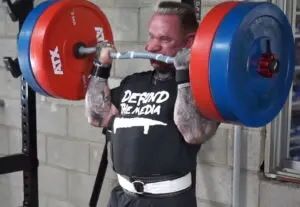
25 EZ Curl Bar Exercises
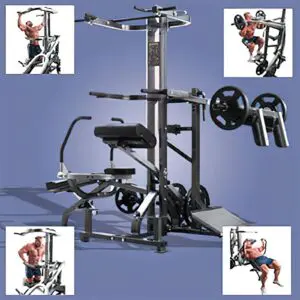
L-QF Powertec Leverage QuikFit System
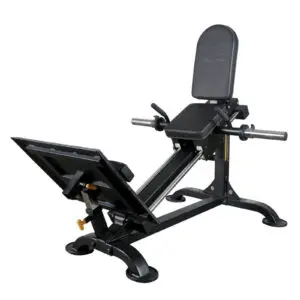
Powertec Compact Leg Sled P-CLS
